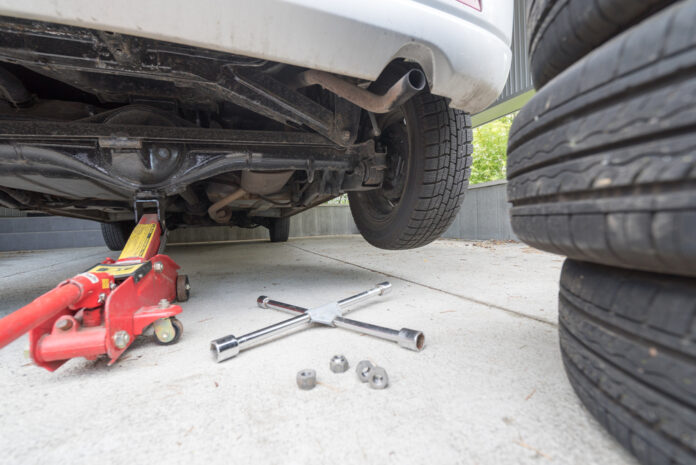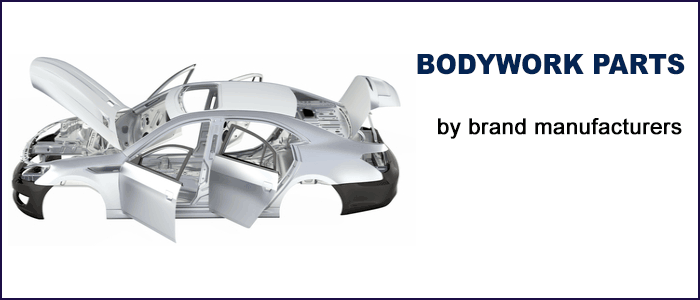Car jack is a tool that can be used to lift a car wheel by wheel. It is part of the on-board equipment on a vehicle. However, the models supplied with new cars are only for emergency use. If you are looking for a jack for a hobby workshop, there are other products available.
Variety of types

Jacks are offered in four different types:
– Mechanical
– Electromechanical
– Hydraulic
– Pneumatic
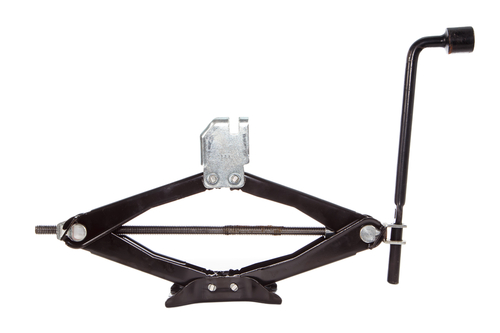
1. Mechanical jacks are either scissor jacks or screw jacks. Both are manually operated types.
- Their advantage is that they are quite inexpensive and light. This makes them ideal for use as an on-board tool.
- Their disadvantage is the somewhat awkward handling. Proper handling is very important in modern vehicles, as incorrect use can damage the car’s bodywork.
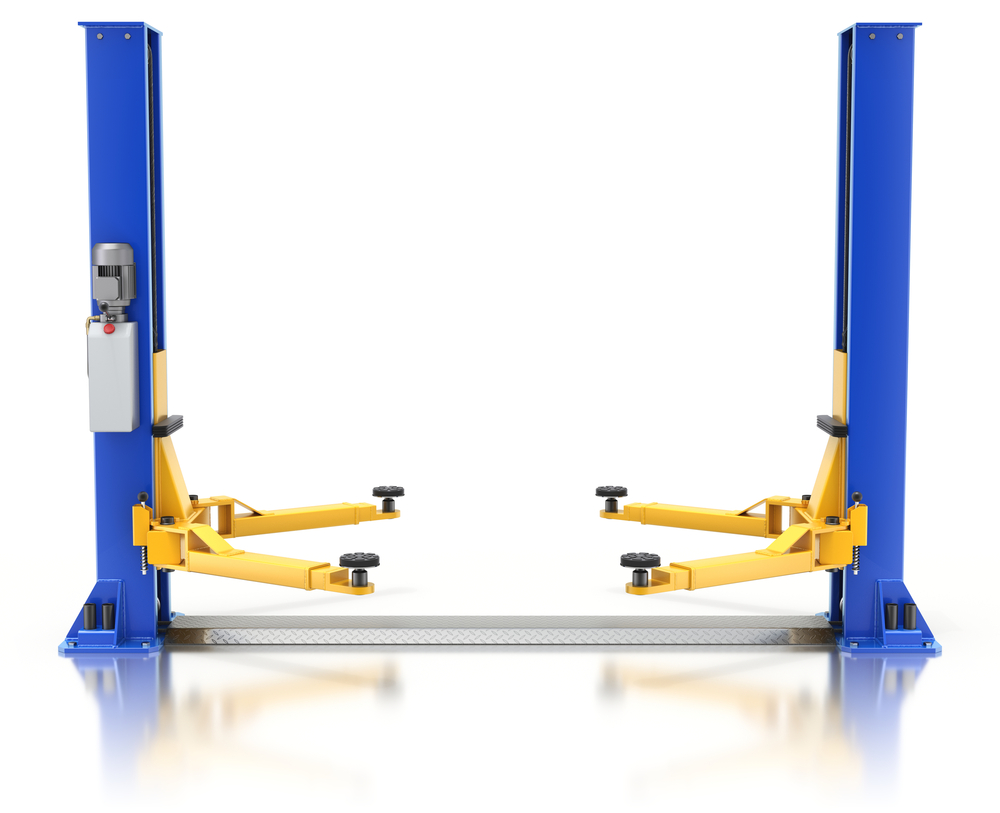
2. Electromechanical jacks are quite rare. The hand crank here is assisted by an electric motor. They speed up and make lifting the car a little easier, but otherwise they have only a few advantages.
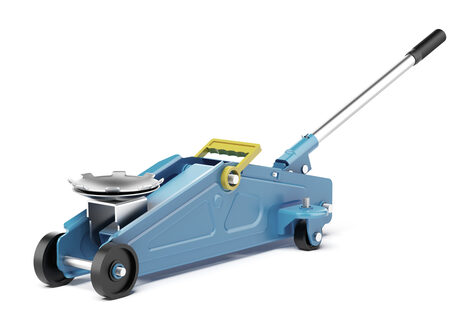
3. Hydraulic jacks are the most powerful models. They are offered as a bottle jack or a floor jack with a four-wheel chassis. These types are the standard models used in workshops. They are easy to handle, very reliable and very strong in lifting.
- The bottle jacks are very compact and are also suitable as a high-quality on-board tool.
- The floor jacks, on the other hand, are very bulky and are best kept in the garage.
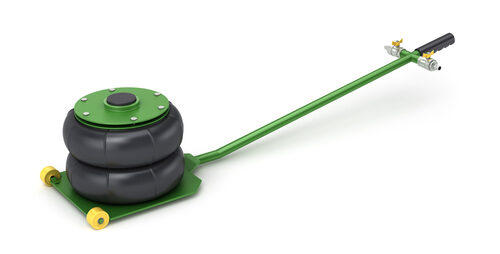
4. Pneumatic jacks are extremely practical as a breakdown aid. They are very easy to use and their design prevents damage to the car’s bodywork. However, they are quite expensive and somewhat bulky even when folded. They are ideal for off-road drivers because they can be used on any surface.
Using a car jack correctly
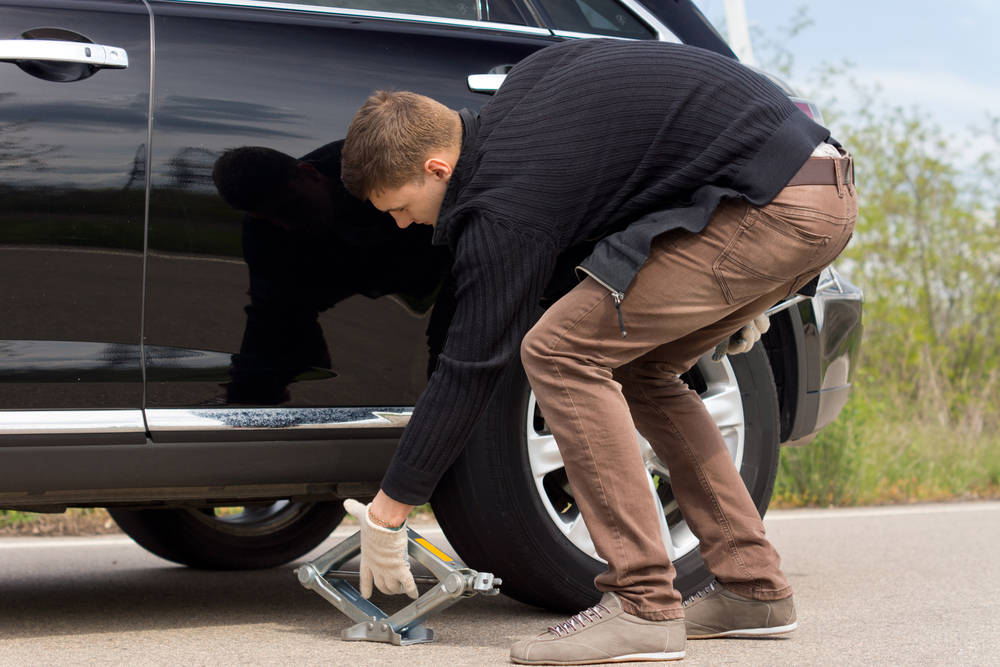
The bodywork of a car has defined points where a jack can be used safely.
- Mercedes-Benz has a particularly convenient solution for jacking points: for many years, the company has equipped its vehicles with specially welded sleeves. The spindle jacks are simply inserted into these.
- All other drivers are strongly advised to read through the car’s operation manual to find out exactly how to attach the jack. So, in case of emergency you will know what to do.
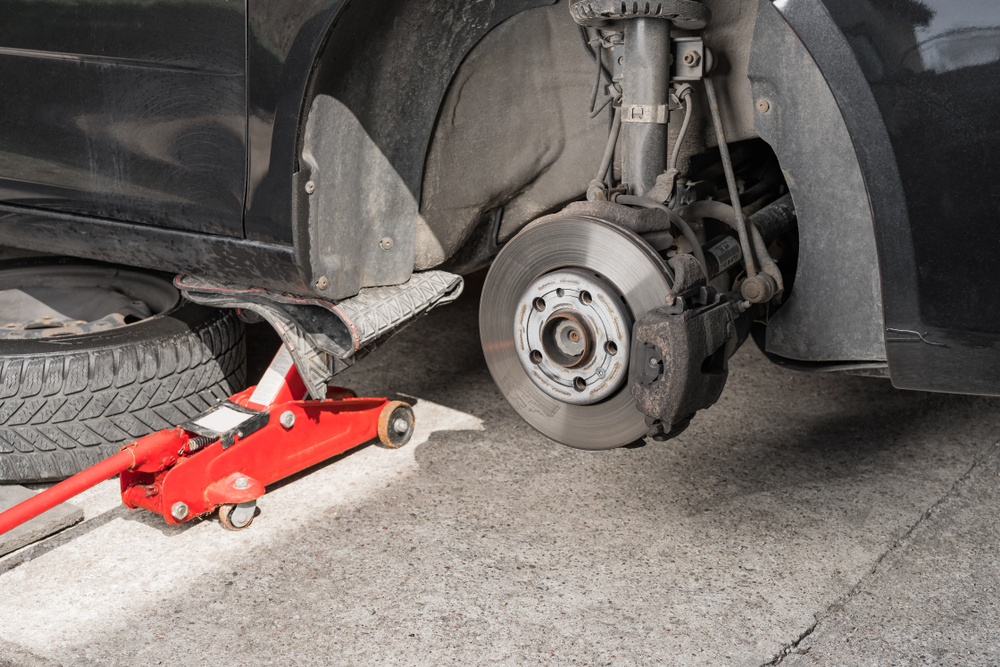
When using hydraulic jacks, you should also pay attention to the attachment points.
- These types have an additional special feature, the purchase of which is strongly recommended: the accessories market offers thick rubber buffers for the support plates of hydraulic jacks.
- This practically prevents damage to the paintwork or underbody protection. Their use, on the other hand, is quite simple: they consist of a small hydraulic system with master cylinder, slave cylinder, shut-off valve and lever pump.
- The hydraulic jack is placed with its lifting bottle under the support point of the car body.
- Then the shut-off valve is closed, and the ram is pumped upwards with the lever. When the repair work is finished, the shut-off valve is opened. We recommend that you always open the valve slowly to avoid a sudden lowering of the car.
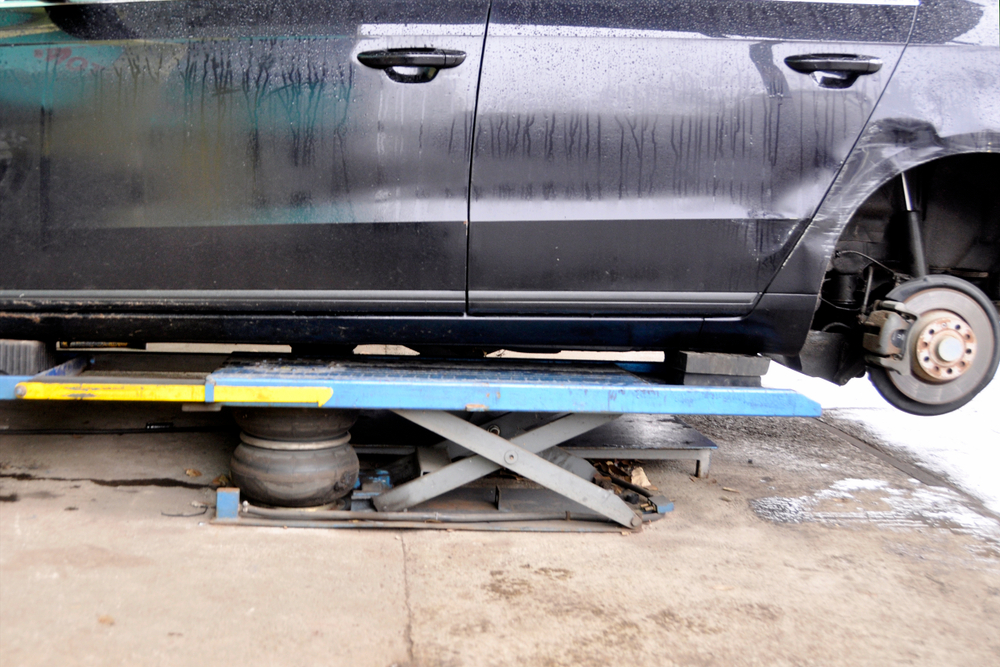
The pneumatic jacks consist of an inflatable impact bag that is connected to the exhaust with a hose.
- The bag is placed under the car and the engine is started. It then inflates within a few seconds and thus lifts the car.
- The jack’s contact surface is very large, both on the car and on the ground. This makes it particularly friendly to the car’s bodywork.
- In addition, this type of jack is very safe and efficient: slipping off the jack is practically impossible, and it is the only one that manages to lift the car over a side. However, it does load quite far out, which takes up space for working under the car.
Always secure your car
The most important thing after positioning the jack in the right spot is to secure the car while it is raised. For anything beyond an emergency wheel change, additional bracing of the car is vital.

Scissor jacks in particular tend to tip over, quickly burying you under your own car. For this purpose, specialist dealers offer brackets. These are available very cheaply today and are available in every workshop. When secured with brackets, the car can no longer slip off the jack and is safe for the mechanic for the entire duration of the repair.
Provisional solutions, on the other hand, are very dangerous again: whether squared timbers, stacks of tyres, paving slabs or other aids – none of them is suitable for securing a car. No one should expose themselves to this risk.
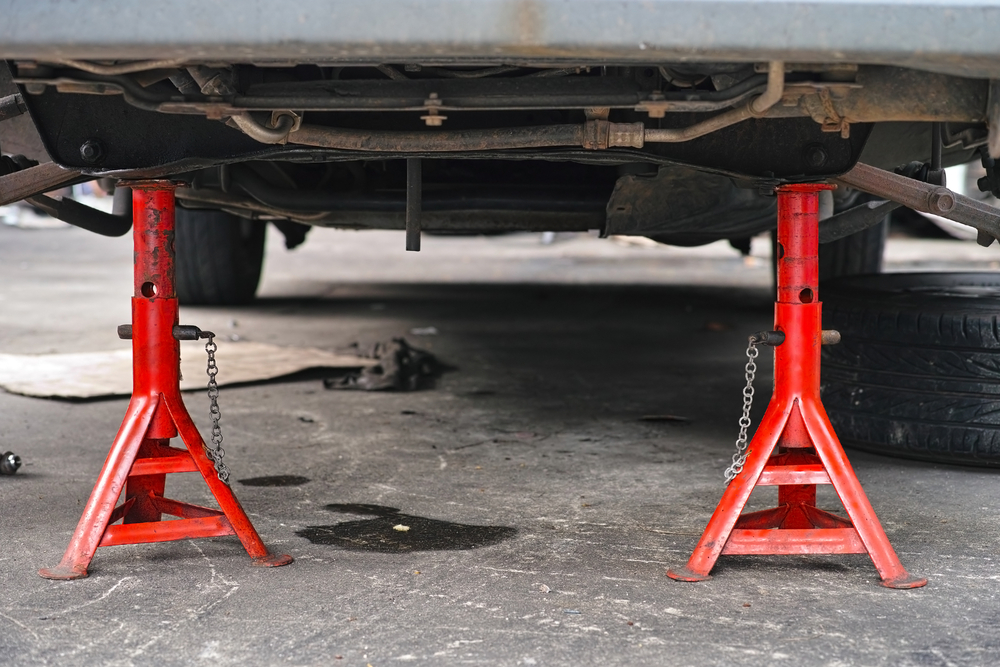
However, it doesn’t always have to be the jacks plus the safety brackets if you want to work under the car. A ramp is very bulky. But it is particularly easy to handle: the two ramps are simply placed straight in front of the front or rear wheels, the car is driven up and secured from rolling away with the handbrake, gear shift and a wedge. You can work under the car for as long as you like – provided you don’t want to dismantle a wheel.
How to find the best car jack
The ideal compromise between compact design, easy handling and high lifting capacity is the bottle jack.
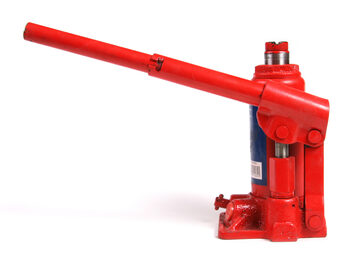 It does not take up more space in the car than the scissor jack. Although these are the cheapest, they are also the least safe of the tools.
It does not take up more space in the car than the scissor jack. Although these are the cheapest, they are also the least safe of the tools.- A floor jack is an ideal introduction to professional workshop equipment for amateur mechanics.
- A jack with inflatable impact bag is only interesting for off-roaders. However, they are perfect for expedition travellers, rally drivers, hunters, and off-road enthusiasts.
You see: Each type has its purpose. If the jack is only needed once a year to change the tyres, you can stay with the on-board jack. But as soon as you need to change the brakes yourself or work on the exhaust, a hydraulic jack plus safety brackets is the best choice.
The price of jacks also varies widely within their individual models. Here it should be said that every pound added is also a plus in quality and reliability. A floor jack for 22 pounds will not last long even with little use. A tool for 250 pounds, on the other hand, can keep the hobby mechanic happy for many years.
Car jack 2.0: The mobile lifting platform
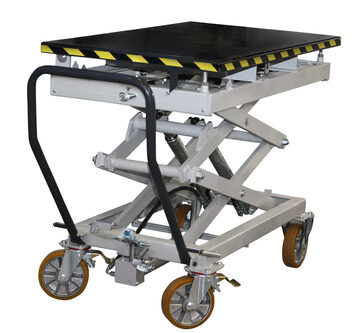 The next stage of development after the floor jack is the mobile lifting platform.
The next stage of development after the floor jack is the mobile lifting platform.
With them, the car can also be completely lifted in the garage without the need for further securing. These tools are operated with a convenient electro-hydraulic system. Mobile car lifters are now available for less than 1300 pounds and offer hobby mechanics a whole new range of possibilities.
Foto: Foto: Africa Studio, ikuyan, Vanoa2, mipan, Kostsov, urfin, Cronislaw, Viacheslav Nikolaenko, nikolansfoto, Kenny CMK, NENG TIEO, ronstik, Vereshchagin Dmitry / shutterstock.com

